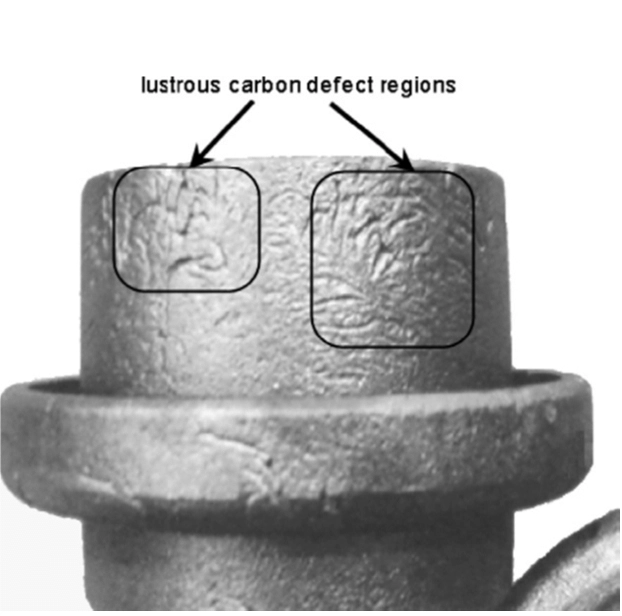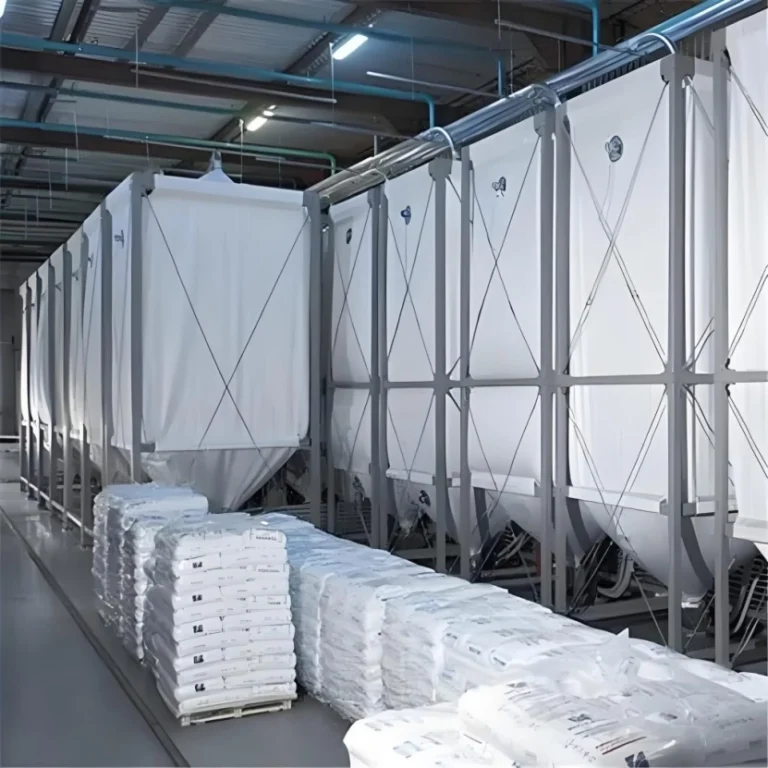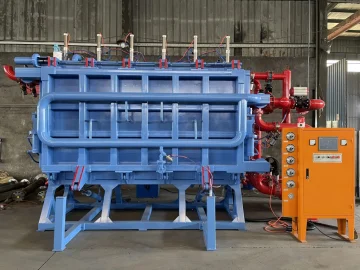Lost foam casting is an advanced manufacturing process renowned for its ability to produce intricate metal parts with high precision and efficiency. Its unique advantages—such as eliminating parting lines, mold removal, sand cores, core dropping, and mold assembly—have driven its widespread adoption in industries like automotive, piping, and wear-resistant casting.
The overall lost foam casting process can be divided into three main zones:
- White Area:The stage where foam patterns are created.
- Yellow Area:The coating (or brushing) stage.
- Black Area:The molding and pouring stage.
This article focuses on the white area, detailing its critical processes and the key control parameters that ensure high-quality foam pattern production.
Understanding the White Area
The white area marks the beginning of the lost foam casting process. Here, specialized foam beads are expanded and formed to create the initial pattern. The term “white area” refers both to the color of the materials and the typical working environment in which these processes occur. This stage is further subdivided into several essential steps:
- Bead Selection
- Pre-Foaming
- Drying/Curing
- Forming Foaming
- Final Drying
- Bonding/Assembly
Each step plays a vital role in producing foam patterns that meet strict quality standards.
1. Bead Selection
Choosing the correct foam bead material is critical to the success of the entire casting process. Unlike standard foaming materials used in packaging, the beads for lost foam casting are specifically engineered to have a honeycomb-like closed-cell structure with pore diameters around 50 μm and cell wall thicknesses of 0.1–0.3 μm. This structure offers several benefits:
- Low density
- Rapid vaporization
- Minimal gas release
- Low residual content
There are three primary types of foam beads used:
EPS (Expandable Polystyrene):
Translucent beads with a carbon content (w(C)) of 92%, minimal gas release, and low cost. Suitable for non-ferrous castings, gray cast iron, and standard cast steel.
STMMA (Styrene/Methyl Methacrylate Copolymer Resin):
Milk-white, translucent beads with w(C) between 60% and 90% and moderate gas release and cost. Commonly used for gray cast iron, ductile iron, low-carbon steel, and alloy steel.
EPMMA (Expandable Polymethyl Methacrylate):
Translucent beads with a w(C) of 60%, offering the highest gas release and highest cost. Primarily used for ductile iron, malleable iron, low-carbon steel, and alloy steel.
When selecting beads, manufacturers must consider:
- The suitability of the bead for the casting material.
- The effect of different w(C) levels on surface carbon deposition.
- The influence of gas release on the casting process.
- Production cost.
The ideal bead material should be low in density, release minimal gas, leave little pyrolysis residue, have low w(C), feature a small bead size, possess good rigidity and processability, and contain minimal inclusions. In addition, bead size should match the casting’s wall thickness: thicker castings use coarser beads, while thin-walled castings require finer beads—ensuring that at least three beads span the thinnest section.
2. Pre-Foaming Process
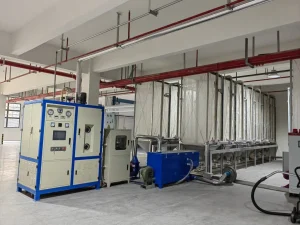
Pre-foaming is the initial expansion of the foam beads to prepare them for final pattern formation. Typically, this stage uses an intermittent steam pre-foaming method. Key parameters during this process include:
Blowing Agent Content:
The original beads typically contain between 4.8% and 7% blowing agent. If the content exceeds 7%, the beads must be exposed to air before foaming to avoid overexpansion and rupture. If the content is below the desired level, adjustments to pressure and time must be made.
Density Control:
Post pre-foaming, the bead density should be maintained between 0.018–0.025 g/cm³, with an expansion ratio of 30–40 times.
Process Flexibility:
Intermittent pre-foaming allows operators to adjust parameters batch-by-batch based on performance, ensuring consistency. Moreover, the temperature and duration of bead storage and transportation play significant roles in achieving the desired pre-foaming results.
3. Drying and Curing
After pre-foaming, beads still contain residual blowing agent and, if steam is used, moisture. This moisture can lead to deformation if the beads are used immediately for forming. To address this, beads must undergo a drying and curing process, which can be performed in two ways:
Natural Curing:
Pre-foamed beads are placed in a cool, dry, and ventilated environment. The curing time depends on ambient conditions and bead density—for instance, beads with a pre-foamed density above 0.01 g/cm³ typically require 4–8 hours of curing, while those with a density greater than 0.035 g/cm³ might not need additional curing.
Pressurized Curing:
If naturally cured beads are too low in density, they can be placed in a sealed container and subjected to a pressurized gas environment (typically 0.2–0.3 MPa for 4–8 hours) to promote further expansion. It is essential that pressurized curing follows natural curing and drying to prevent water-induced corrosion of the equipment. The curing chamber should be maintained at 18–22°C, with proper ventilation and grounding to avoid static buildup.
3. Forming Foaming Process
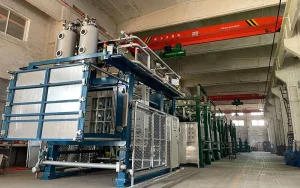
The forming foaming stage involves introducing the pre-foamed beads into a mold cavity with compressed air and then applying hot steam. This causes any residual blowing agent to further expand the beads, filling the mold cavity and fusing them into a solid pattern. Modern forming machines—available in both semi-automatic and fully automatic versions—minimize human intervention by automatically controlling:
- Filling
- Pressurization
- Heating
- Cooling
Common defects during this stage and their remedies include:
Insufficient Fusion or Density:
Often caused by inadequate filling, low forming temperatures, or insufficient blowing agent; adjustments to these parameters can resolve the issue.
Melting or Shrinkage on the Mold Surface:
Typically due to excessively high forming temperatures or rapid cooling; controlled by fine-tuning temperature and cooling rates.
Blurred or Incomplete Surface Contours:
Caused by an inappropriate bead size or poorly designed feed/vent ports; addressed by adjusting bead size or improving mold design.
Expansion or Protrusion at Bead Interfaces:
A result of overly rapid cooling or extended forming times; can be mitigated by reducing cooling rates and extending the cooling duration.
Post-Demolding Shrinkage:
Due to low bead density or insufficient curing; these factors should be closely monitored and adjusted as needed.
5. Bonding and Assembly
For castings with complex geometries or when specific gating system requirements prevent a one-piece pattern, the foam pattern must be segmented and later bonded together. Bonding media include rubber emulsions, resin solvents, hot-melt adhesives, and adhesive tapes. Key considerations during bonding include:
Minimal Adhesive Use:
Only a small amount of adhesive should be applied to both surfaces. Once the adhesive becomes tacky, the pieces are pressed together firmly to expel any excess.
Additional Fastening:
In some cases, pins may be inserted for extra fixation. However, their use should be minimal, especially for special material castings where pinning is not allowed.
Seamless Joints:
Bonding joints must be free of gaps. Any unavoidable gaps should be sealed carefully with adhesive tape.
High-Quality Surface Finish:
The bonding surfaces must be smooth and precisely aligned. Any uneven areas should be finely sanded to ensure a perfect assembly.
Equipment and Process Integration
Hangzhou Ouchen Technology Co., LTD offers state-of-the-art equipment that precisely controls the white area in lost foam casting. Their integrated systems—leveraging advanced German EPS/EPP technology—focus on automation and efficiency throughout the process. Key equipment includes:
Pre-Foaming Machines:
These machines employ electromagnetic and steam heating to maintain stable temperatures and ensure uniform foaming. Electronic weighing systems provide quantitative control over the foaming process.
Maturation Silos:
Designed to manage the post-expansion maturation process, these silos use material level sensors and automatic timing adjustments to prepare beads optimally for molding. Dual-screen controls offer precise adjustments and monitoring.
Foam Molding Machines:
Available in vertical and horizontal configurations, these machines use hydraulic systems to secure molds and prevent steam leaks. Improved heating efficiency ensures accurate pattern formation.
Air Dryers:
Utilizing energy-efficient air heat pumps, these dryers rapidly remove moisture from the white pattern and coating, ensuring readiness for subsequent processes.
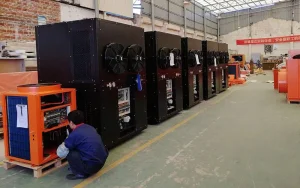
Central Vacuum Systems:
PLC-controlled systems maintain a negative pressure environment for quick cooling of the white pattern, feature heat recovery, and avoid wastewater discharge.
Lift-Type Paint Mixers:
These mixers ensure uniform blending of coatings applied to the foam patterns, contributing to consistent final quality.
Together, these systems ensure high efficiency, energy savings, and automation in the white area, leading to consistent and high-quality foam pattern production. Hangzhou Ouchen Technology Co., LTD also provides comprehensive after-sales service and technical support.

